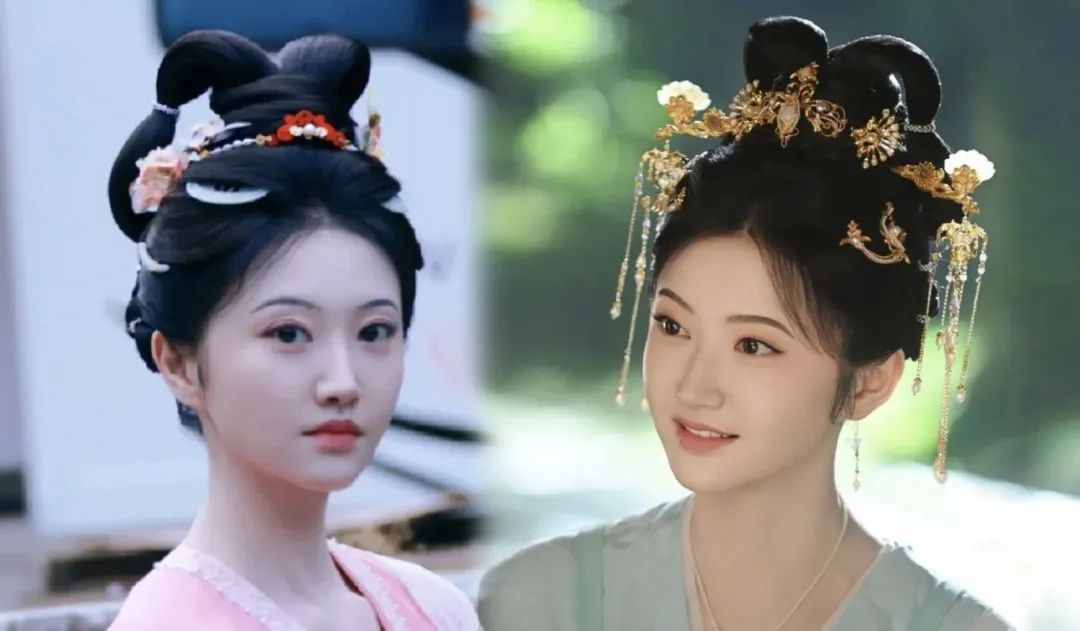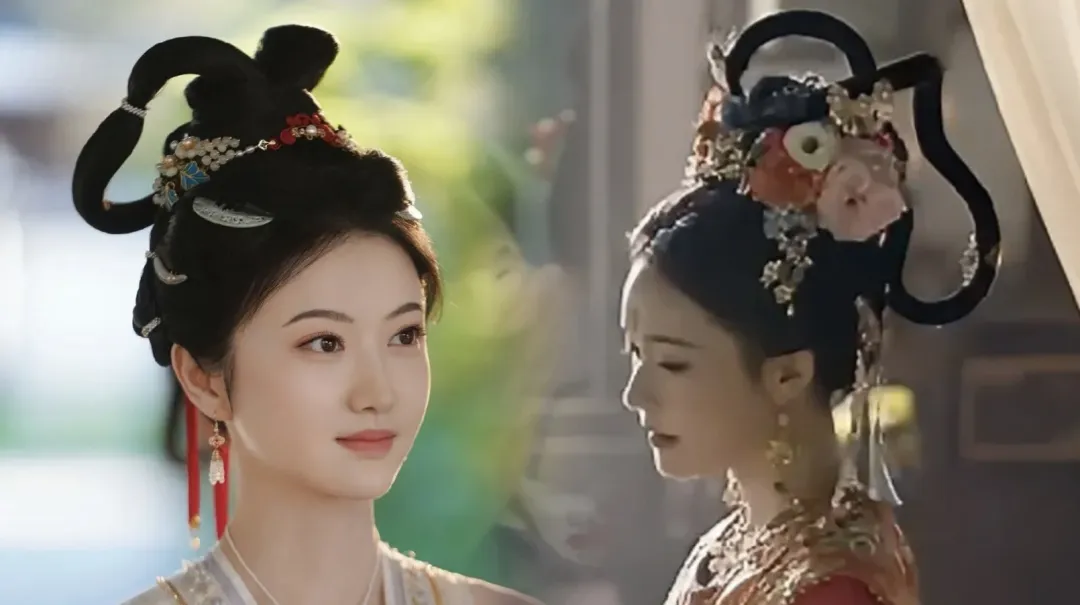In the TV series Si Jin, Jing Tian appears with this hairstyle so frequently that it seems to be her signature look. The only variations are the accessories, leading netizens to joke: Is this hairstyle welded onto her head?

The hairstyle in question is called Shuang Huan Wang Xian Ji (双鬟望仙髻), an evolved version of the traditional Shuang Huan Ji (双环髻). Originally a youthful hairstyle, its ethereal beauty made it a favorite in classical depictions of celestial beings and noblewomen, as seen in masterpieces like Nymph of the Luo River and Eighty-Seven Immortals.
Lin Yun also sported this look in How Can She Be So Charming, albeit with a more exaggerated flair. The difference lies in the evolution of the hairstyle: from the rounded, voluminous buns of the Wei-Jin and early Tang dynasties to the wavier, more dynamic forms of the mid-to-late Tang period. By the Song dynasty, it became a mainstream trend, simplified for daily wear with added pearl embellishments—akin to Jing Tian’s interpretation.
Despite its celestial moniker (Wang Xian Ji translates to immortal-aspiring bun), this hairstyle is actually a wig. Crafted with wooden or rattan frames and wrapped in hair, it allowed for versatile styling without the daily hassle. The technique involves parting the hair into two sections, looping them into buns, and securing them with pins—a practical solution for ancient women.
Its enduring popularity stems from an otherworldly charm that balances elegance with whimsy. While the classic Shuang Huan Ji exudes refinement, the Wang Xian variant’s cloud-like loops evoke a fairy-tale allure. But as netizens quip: just because it’s stunning doesn’t mean it should be overused. What do you think?


